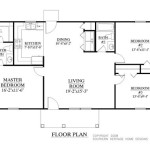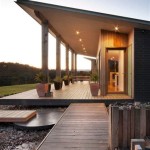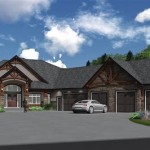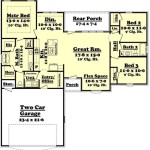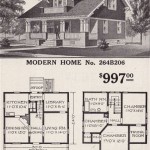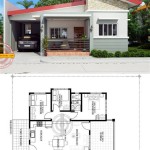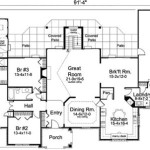Mountain View House Plans With Walkout Basement: A Comprehensive Guide
The allure of a mountain view property is undeniable. When combined with the functional advantages of a walkout basement, the result is a highly desirable living space that seamlessly blends indoor and outdoor living. This article delves into the intricacies of designing and building mountain view house plans with walkout basements, exploring key considerations related to architectural style, site layout, structural integrity, and maximizing the scenic potential.
Mountain properties often present unique topographical challenges. Sloping lots, rocky terrain, and varying soil conditions require meticulous planning and expert execution. Unlike a typical basement that is fully submerged, a walkout basement is partially or fully exposed on one side, allowing direct access to the outdoors. This feature is particularly advantageous in mountain settings, where it can significantly enhance the livability and value of the home.
A well-designed mountain view house plan with a walkout basement takes full advantage of the natural landscape. It integrates the home into its surroundings, preserves the integrity of the site, and provides stunning views from multiple levels. The walkout basement transforms from a subterranean space into a bright and inviting area suitable for a variety of purposes, such as recreation rooms, guest suites, home offices, or even rental units.
Key Point 1: Site Assessment and Design Considerations
Before embarking on the design process, a thorough site assessment is paramount. This involves analyzing the slope of the land, the soil type, the drainage patterns, and the existing vegetation. The orientation of the lot with respect to the sun and prevailing winds also plays a crucial role in determining the placement and design of the house.
The slope of the land will dictate the extent to which the basement can be exposed. A steeper slope generally allows for a more substantial walkout area, while a gentler slope may require more excavation. The soil type will influence the foundation design and the need for retaining walls. Poorly draining soils may necessitate the installation of a French drain system to prevent water damage to the basement.
Consideration must be given to maximizing the views from all levels of the house, including the walkout basement. Large windows and sliding glass doors should be strategically placed to capture the most breathtaking vistas. Outdoor living spaces, such as patios and decks, should be seamlessly integrated with the walkout basement to create a cohesive indoor-outdoor environment.
The architectural style of the house should complement the surrounding landscape. Natural materials, such as wood, stone, and timber, are often preferred for mountain homes, as they blend harmoniously with the environment. The roof design should be carefully considered to shed snow effectively and minimize the risk of ice dams.
Furthermore, local building codes and regulations must be strictly adhered to. These codes may impose restrictions on building height, setbacks, and drainage requirements. It is essential to consult with a qualified architect and engineer to ensure that the design meets all applicable standards.
Key Point 2: Structural Integrity and Foundation Design
The foundation is the cornerstone of any building, and its design is particularly critical for mountain view houses with walkout basements. The foundation must be able to withstand the weight of the house, the lateral pressure of the soil, and the forces of nature, such as wind, snow, and seismic activity.
Several foundation options are available, including poured concrete walls, concrete block walls, and insulated concrete forms (ICFs). Poured concrete walls are generally considered the strongest and most durable option, but they can be more expensive than concrete block walls. ICFs offer excellent insulation and can simplify the construction process.
Retaining walls may be necessary to stabilize the slope and prevent soil erosion. These walls must be properly designed and constructed to withstand the lateral pressure of the soil. Drainage systems are essential to prevent water from accumulating behind the retaining walls, which could weaken their structural integrity.
The walkout basement requires special attention to ensure that it is properly insulated and waterproofed. Insulation helps to reduce energy costs and prevent condensation, while waterproofing protects the basement from water damage. A vapor barrier should be installed on the warm side of the insulation to prevent moisture from migrating into the wall cavity.
The foundation should be designed to withstand the specific soil conditions of the site. A geotechnical engineer should conduct a soil analysis to determine the bearing capacity of the soil and the potential for soil movement. This information is crucial for designing a foundation that is stable and durable.
Key Point 3: Optimizing the Walkout Basement Living Space
The walkout basement offers a unique opportunity to expand the living space of a mountain home. With careful planning and design, it can be transformed into a bright, comfortable, and functional area that complements the rest of the house.
Natural light is essential for creating a welcoming and inviting basement space. Large windows and sliding glass doors should be strategically placed to maximize the amount of natural light that enters the basement. Light wells can also be used to bring natural light into areas that are below grade.
The layout of the walkout basement should be carefully considered to meet the specific needs of the homeowner. Common uses for walkout basements include recreation rooms, home theaters, guest suites, home offices, and rental units. The layout should be flexible enough to accommodate a variety of uses over time.
Proper ventilation is crucial for maintaining a healthy and comfortable indoor environment. A ventilation system should be installed to circulate fresh air and remove stale air. This is particularly important in basements, which are prone to moisture and mold growth.
The walkout area should be seamlessly integrated with the outdoor living spaces. A patio or deck can be added to provide a comfortable and convenient space for outdoor relaxation and entertainment. Landscaping can be used to create a visually appealing transition between the basement and the surrounding landscape.
Furthermore, consider the accessibility of the walkout basement. If the basement is intended for use by elderly or disabled individuals, it should be designed with accessibility in mind. This may include features such as ramps, widened doorways, and grab bars.
Finally, the walkout basement should be finished to the same standards as the rest of the house. This includes using high-quality materials, paying attention to detail, and creating a cohesive design aesthetic. A well-finished walkout basement can significantly enhance the value and livability of a mountain home.
Integrating a walkout basement into a mountain view house plan requires careful consideration of multiple factors, from site assessment and structural integrity to optimizing the living space and maximizing the scenic potential. By addressing these key considerations, homeowners can create a stunning and functional home that seamlessly blends indoor and outdoor living while taking full advantage of the breathtaking mountain views.
Careful planning also extends to the selection of appropriate building materials that withstand the harsher weather conditions often found in mountain environments. This could include using weather-resistant siding, high-performance windows, and a robust roofing system capable of handling heavy snow loads. The choice of exterior finishes should also complement the natural surroundings, minimizing visual impact on the landscape.
Energy efficiency is another crucial aspect of mountain home design. Incorporating sustainable design principles, such as passive solar heating and cooling, can significantly reduce energy consumption and minimize the environmental footprint of the house. High levels of insulation, energy-efficient windows and doors, and a properly sized heating and cooling system are all essential for creating a comfortable and energy-efficient mountain home.
The integration of smart home technology can further enhance the functionality and convenience of a mountain view house with a walkout basement. Smart thermostats, lighting controls, and security systems can be remotely controlled, allowing homeowners to manage their home from anywhere in the world. This is particularly useful for vacation homes or properties that are not occupied year-round.
Finally, it's essential to work with experienced professionals who have a proven track record of designing and building mountain homes with walkout basements. A qualified architect, engineer, and contractor can provide valuable guidance and expertise throughout the design and construction process, ensuring that the project is completed successfully and to the highest standards.

Rustic Mountain House Floor Plan With Walkout Basement Lake Plans Cottage

Mountain House Plans With Walkout Basement Donald Gardner

Plan 51854 Mountain House With Walkout Basement

Rustic Mountain House Floor Plan With Walkout Basement Plans Ranch Style

Plan 85140 Mountain House With Walkout Basement

House Plan 3 Bedrooms 2 5 Bathrooms 3992 V3 Drummond Plans

House Plan 3 Bedrooms 2 Bathrooms 3998 Drummond Plans

Rustic Mountain House Floor Plan With Walkout Basement Lake Plans Front

House Plan 2 Bedrooms Bathrooms 3975 Drummond Plans

Rustic Mountain House Floor Plan With Walkout Basement

